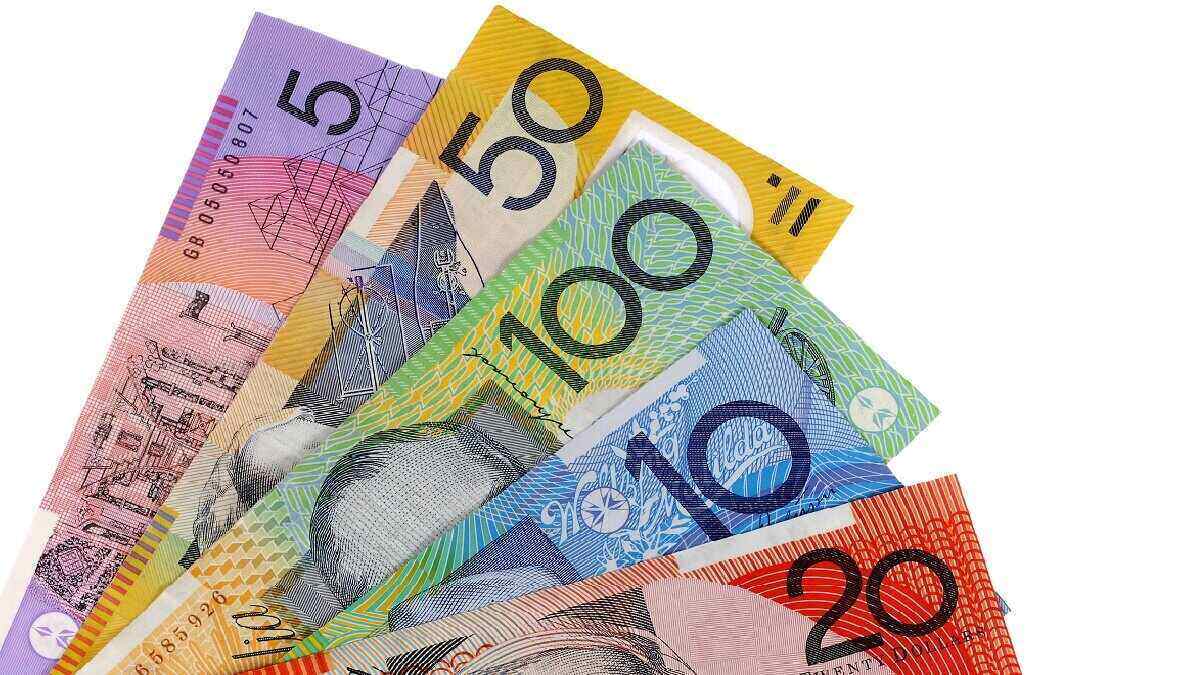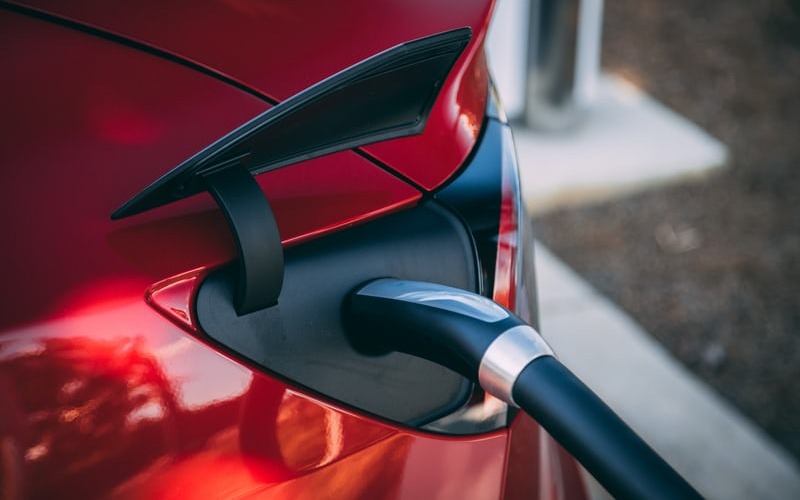If you’ve attended a barbeque, dinner party, or even a workplace watercooler in recent times, it's likely you’ve had or heard conversations about interest rates. How high rates are right now, how low a rate a mate managed to find, and what rates might do next have all been major talking points since the Reserve Bank of Australia (RBA) began its hiking spree in May 2022.
Since then, rising mortgage interest rates have placed many Australian homeowners under financial strain. But what about those who owe money on a car loan, or are considering taking out finance for a new set of wheels?
Have car loan interest rates increased at a similar rate as home loans? And if not, why not?
Let’s dive into the relationship between the RBA cash rate and car loan interest rates, beginning with the basics.
Why does the RBA cash rate impact interest rates?
Prior to 2022, you’d be forgiven for not having heard of the RBA cash rate. It's the central bank’s only tool against inflation, which had arguably been too low in the years leading up to 2022. Low inflation led the cash rate on a generally downwards trajectory in the decade to 2020, reaching a record low 0.1% that year.
But how does the cash rate influence inflation and interest rates? Well, the cash rate determines, among other things, how much banks have to pay to borrow the money they provide to consumers through the likes of home loans and car loans. Thus, when the cash rate is high, banks have to pay more to upkeep their business, and they tend to charge borrowers more, in the form of higher interest rates, to cover their higher costs.
The RBA aims to keep inflation in the realms of 2% to 3% on an annual basis. However, on the back of the pandemic and record household savings, inflation took off in 2021 and 2022, forcing the RBA to increase the cash rate 13 times to 4.35% by November 2023.
And while home loan interest rates have been widely reported and discussed in the months and years since, those on car loans appear to have been largely left out of the conversation.
Have car loan interest rates increased since the RBA’s first hike?
Take a look at the chart below, depicting both the cash rate and movement in interest rates on new loans from April 2022 to November 2023.
As the chart shows, though it might be hard to notice, the increase in interest rates on new home loans have far outpaced those of car loans.
The typical interest rate on a new owner-occupier, variable rate home loan rose 158% between April 2022 (one month prior to the RBA’s first hike) and November 2023, reaching 6.23% p.a.
On the other hand, new fixed rates on a secured car loan jumped 33% to 8.15% p.a., according to InfoChoice data adjusted to identify trend. For a new unsecured car loan, it climbed 19% to 8.67% p.a.
But there might be more to it than meets the eye. Particularly, as lenders tend to vary car loan rates greatly from their lowest advertised rate – more on that below.
A quick guide: Secured vs unsecured car loans
Before we go further, it's important to note the difference between secured and unsecured car loans, and why they generally offer different interest rates.
A secured car loan is one that has collateral attached. This collateral is generally the car itself. It means that, if a borrower defaults on their loan, their lender can take the collateral in order to recoup its losses.
On the other hand, if a borrower defaults on an unsecured car loan, their lender may have to cop the loss. Though, the default would be reflected on the borrower’s credit history and, in some cases, their lender might take them to court over the debt.
Some of the market’s best car loan interest rates revealed
In the market for a new car? The table below features car loans with some of the lowest interest rates on the market.
Lender | |||||||||||||
|---|---|---|---|---|---|---|---|---|---|---|---|---|---|
| Variable | New | 1 year | More details | ||||||||||
| FEATURED | New Car Loan - Home Owner Special
| ||||||||||||
New Car Loan - Home Owner Special
| |||||||||||||
| Fixed | New | 99 years | More details | ||||||||||
| Loan amounts from $2k to $75k | New Car Loan
| ||||||||||||
New Car Loan
| |||||||||||||
| Fixed | New | 1 year | More details | ||||||||||
| Approval within 24 hoursEarly payout available | New Car Loan - Special (Fixed)
| ||||||||||||
New Car Loan - Special (Fixed)
| |||||||||||||
| Fixed | New | 2 years | More details | ||||||||||
New Vehicle Fast Loan Low Rate | |||||||||||||

- Available for purchasing new and demo vehicles
- $5,000 to $150,000 loan amount
- Redraw facility available up to $5000/day
- Required: Good credit history, stable employment history. Aus citizenship or PR.
Why have car loan interest rates behaved differently to home loan rates?
We’ve found that home loan interest rates appear to have increased at a faster pace than those on car loans.
But, as one expert who keeps a close eye on the products told Savings.com.au, car loan interest rates might have increased more in actuality.
Why that might be is hard to pin down, but we can have a good stab at the answer.
Five reasons why:
1. Car loan rates typically vary more than mortgage rates tend to
The first factor worth noting is that the interest rates a borrower might be charged on a car loan often differ greatly to the advertised rate.
The above chart, and the majority of data out there, only distinguishes advertised rates, which are for the most part the lowest rate a car loan borrower will receive.
The same lender might offer different interest rates to different borrowers, even if they’re applying for the same product.
“Car loan borrowers get charged a rate relevant to the risk that a bank is taking on in lending them the money,” Finch Financial Services managing director Julian Finch told Savings.com.au.
“Two borrowers might buy the same car, go to the same lender, and get two entirely different rates based on their personal risk profiles.”
Borrowers who own a home, have excellent credit history, and/or who buy their car new or from a dealership are generally considered less risky than those who don’t hold other assets, have a limited or poor credit history, and/or who purchase an older car, or via a private sale.
Not to mention, the advertised rates on car loans differ greater between products.
Take the nation’s biggest bank, CommBank, for instance. At the time of writing, it offers some car loans with rates as low as 6.49% p.a. and others with rates as high as 20.50% p.a.
When it comes to owner-occupier mortgages for borrowers making principle and interest repayments, however, its lowest advertised rate (excluding that of its green home loan product) is 6.49% p.a. while its highest is 8.80% p.a.
2. Car loan rates were often higher than home loan rates to start with
That means lenders might have had some leeway in their profit margins to work with.
“Some car loan rates might have, for instance, gone from 8% p.a. to 13% p.a. (+62%), but many home loan rates have gone from 2% p.a. to 6% p.a. (+200%),” Mr Finch said.
“In that case the rate on a car loan has still increased by more (+5 percentage points) than what the mortgage’s rate has (+4 percentage points).”
3. The size of an average car loan is minuscule compared to a typical home loan
The most popular car among Australian buyers in 2023 was the Ford Ranger, which the manufacturer estimates can be driven away for just under $48,000.
The median Australian house price, meanwhile, was around $760,000.
For that reason, repayments on home loans are generally much higher than those on car loans. That’s the case even after factoring in the longer lifespan of a typical mortgage.
“You might have a $1 million home loan, or a $20,000 personal loan,” Mr Finch said.
“A 4% increase on the interest rate on a $1 million loan is going to be a lot more [in terms of an increase in repayments] than a 5% increase on the interest accrued on a $20,000 loan.”
That might be one of the reasons that lenders generally treat car loan interest rates differently to home loan interest rates.
4. Consumer demand & the cost of living crisis
Mr Finch notes that consumer demand and the (often) elective nature of a car purchase might have weighed on car purchases, and perhaps thereby dampened car loan rates.
After all, there are plenty of ways to avoid buying a new car, or to reduce the expense of doing so by buying a second hand car or an older model.
“The overall cost of living has increased, and it has put pressure on people's decisions to buy some of these discretionary items,” he said.
“You can't avoid paying your mortgage, but maybe you can put off buying a new car until you get a pay rise or until rates come down.”
5. Less scrutiny on high or rising rates
Finally, Mr Finch stated there are generally fewer eyes on car loan interest rates.
Therefore, lenders can often hike or cut them with far less scrutiny than they can change home loan rates.
“I think you'll also find they go up a little bit more than a mortgage’s rate because there's a lot less scrutiny on them,” he said.
“Lenders’ reputations don’t get damaged so easily [by car loan rate hikes].
“They’ve got absolutely no fear in increasing their car loan rates.”
How higher interest rates can impact car loan repayments
When comparing car loan products, many people look exclusively at the interest rate on offer.
However, how much or how little that rate will impact their repayments might be an enigma.
When it comes to a $30,000, three year car loan, a few basis points likely won’t make a huge difference when it comes to repayments. Though, a full percentage point increase might pack a sting, as the chart below shows.
|
Interest rate (p.a.) |
Monthly repayments on a $30k, 3-year car loan |
|
2% |
$859.28 |
|
2.5% |
$865.84 |
|
3% |
$872.44 |
|
3.5% |
$879.06 |
|
4% |
$885.72 |
|
4.5% |
$892.41 |
|
5% |
$899.13 |
|
5.5% |
$905.88 |
|
6% |
$912.66 |
|
6.5% |
$919.47 |
|
7% |
$926.31 |
|
7.5% |
$933.19 |
|
8% |
$940.09 |
|
8.5% |
$947.03 |
|
9% |
$953.99 |
|
9.5% |
$960.99 |
|
10% |
$968.02 |
|
10.5% |
$975.07 |
|
11% |
$982.16 |
|
11.5% |
$989.28 |
|
12% |
$996.43 |
But it's not only your interest rate that can impact your monthly repayments.
It’s not uncommon for car loan repayments to include additional fees and charges, which can add up.
Lenders will always provide a comparison rate. That is, a rate reflective of the true cost of a loan, considering such fees and charges.
Still, hidden fees are still important to be aware of.
That’s particularly true if you’re not signing onto a loan through a lender or you’re doing so indirectly, which can be the case with dealership finance.
“Car dealership finance providers have a point of sale exemption, where they don't actually have to disclose all the fees that they charge,” Mr Finch warns.
“Sometimes you can walk out of a car dealership thinking you've got a good deal, and really you don’t.”
That is to say, it can pay dividends to read the fine print on any financial product and to ensure you understand all you can about a loan before signing on the dotted line.
RBA cuts could occur in 2024, and may weigh on car loan rates
It’s looking more and more likely that the cash rate has now peaked, and that means the RBA’s next move could be a cut.
When that might occur is the golden question, with many economists forecasting a cash rate drop this year and others pushing their projections out further.
When a cut does occur, however, it will likely spur lenders to lower car loan interest rates.
“Whenever there's an opportunity for lenders to become more competitive with their rates, then we will see a reduction in in car loan interest rates,” Mr Finch said.
Though, such reductions likely won’t garner the interest of the masses the way home loan rate cuts tend to.
“We're also not going to see the same scrutiny on asset financing, so you might not see the same level of discounting occur in asset finance.
“You might see a little bit of a change, but it may not be as significant as it is in the mortgage space.”
Savings.com.au’s two cents
Like home loans, car loan rates have been impacted by the RBA’s cash rate hiking spree.
However, the way this impact has materialised is notably different between the two finance products.
While typical home loan rates have often doubled or even tripled, car loan rates have generally seen a comparable, and in many instances even greater, rise in terms of percentage points.
Therefore, it's equally crucial to compare car loan options to ensure you secure the best possible deal.
Consider using a comparison service, such as Savings.com.au, or visiting a broker to make sure you’re getting one of the best deals available to you.
Image by Paul Trienekens on Unsplash





 Brooke Cooper
Brooke Cooper

 Harry O'Sullivan
Harry O'Sullivan
 Alex Brewster
Alex Brewster


